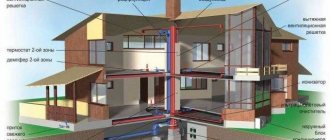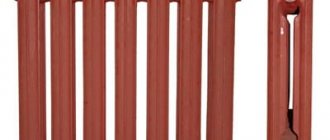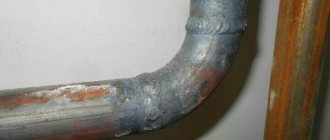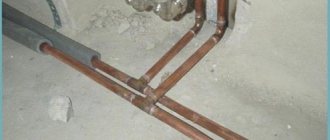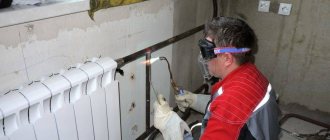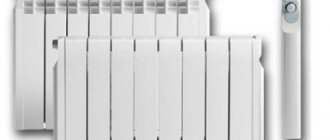The radiator does not last forever and can leak, usually at the wrong time. However, this does not mean that you need to urgently contact a car repair shop. If the antifreeze leak is insignificant, it is enough to seal it with cold welding for the radiator. Then repairing the car engine cooling system will be cheaper and faster. And when you have free time, do it thoroughly.
Broken radiator
- Mechanical damage received during an accident or from a stone flying out from under the wheels of the car in front. Sometimes an inexperienced amateur accidentally causes damage when servicing a radiator with his own hands.
- Violation of operating rules is not only failure to comply with the schedule for cleaning and flushing the cooling system. The use of low-quality antifreeze, which freezes in slight frost, which contributes to the appearance of cracks. If its composition contains aggressive substances, they will corrode the metal over time.
- Natural wear and tear occurs due to metal corrosion, then the radiator cannot be repaired, it will have to be replaced.
- Leak in the tubes through which coolant enters the radiator.
- Cracks in radiator pipes.
- Leaks in seals can be eliminated without welding by simply replacing them.
- Clogged tubes.
Sometimes the result of poor cooling is a thick layer of dirt on the radiator, preventing efficient heat dissipation. The situation can be corrected by simply washing with a hose. Damage can be repaired by welding or soldering, and small cracks can be repaired with special compounds.
Cold welding - what is it, application for heating system
The technology of gluing metals has been used since ancient times; as a result, permanent connections were created without the risk of oxidation of parts. Cold welding is understood as a technological process of joining products without additional heating, as a result of which their surfaces undergo plastic deformation. The latter destroys the film of oxides, which previously prevented the metals from joining. Welding occurs in a short period of time as a result of setting. In appearance, this adhesive composition resembles putty and is made on the basis of epoxy resin.
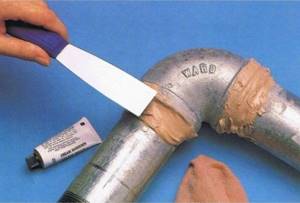
Cold welding is now widely used to join the following metals:
- cast iron;
- stainless steel;
- copper;
- tin;
- aluminum;
- nickel;
- lead.
Using welding glue, you can repair steel and aluminum batteries, cast iron radiators, and bimetallic radiators. Polymer products for pipelines can also be welded in this way. We are talking about propylene pipes, which are used for installing a heating system. If the technology is strictly followed, it is possible to seal a pipe, riser, or radiator with any defect, although the strength of the joint will be somewhat inferior to that after electric arc welding.
Cold welding composition
Adhesive for metal and plastic is made from epoxy resin, a polymer with high strength characteristics. It is this resin that is responsible for the homogeneity, plasticity of the mass, the ability to seal even minimal cracks and fill holes. Epoxy can thicken only when in contact with the hardener that comes with the kit (in some products it is in solid form and is activated after exposure to air and mixing).
Cold welding contains various fillers that optimize technical properties: steel powder (strengthening additive), sulfur, plasticizers. When repairing radiators, you must definitely pay attention to such additives; they must be in the putty.

Types of cold welding used to repair cast iron batteries
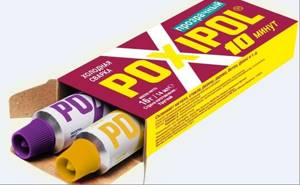
Not all types of epoxy compounds are used to repair heating radiators. Despite the general disadvantages that are inherent in all types of adhesive compositions, the industry has mastered the production of several compositions that have their own specialization. So there are mixtures for repairing plastic, metal, aluminum and gluing wood, there are universal compositions. For repairing heating appliances, a mixture for gluing ferrous metals and steel or a special composition for repairing radiators and steel heating pipes is best suited.
Cold welding for heating radiators, unlike other compositions, has its own characteristics - it must be heat-resistant, quickly fixed on a metal surface, and form a coating that has a linear expansion coefficient similar to metal.
Simple or universal compositions can solve the problem of sealing a leak, but at the same time, the service life of the composition will be limited. Cold welding for heating radiators must withstand not only high pressure, but also temperature. It is recommended to use compositions for repairs in which the temperature range is greater, with the upper limit being no less than 200-250 degrees Celsius.
Another point that needs to be taken into account when choosing the type of glue is the setting time. If 3-4 hours are enough to splice parts under normal conditions, then if the battery leaks, there is no such time, here the count is in minutes, therefore, the faster the patch hardens, the better.
Types of welding
All products belonging to this type are divided into plastic and fluid. The latter are necessarily two-component mixtures - one bottle contains epoxy resin with additives, the second contains a hardener. Plastic masses are sold in tubes, bottles, jars; they can be used to coat a pipe or radiator without dilution. The mass looks like plasticine, consisting of two blocks that need to be mixed together by kneading with your fingers. It is possible to separate a small piece of the mass and save the rest until the next need.
Methods of use
To repair pipes, you need to prepare everything you need - the welding agent itself, acetone or alcohol, sandpaper, rags and clamps. The method of sealing radiators varies somewhat depending on the type of welding - liquid or plastic. It is important to choose a suitable product that is suitable for pipes under pressure (metal or polypropylene). Next, you need to prepare and mix the material, and you should work faster with liquid products.
Welding application methods:
- simply sealing the defect with a piece of mass, flattened and kneaded with your fingers;
- the use of special fiberglass fabrics, threads for wetting with epoxy, followed by wrapping with rubber, wire or without it;
- gluing onto a large defect covered with a metal patch.
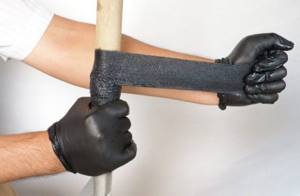
If the leak is strong, you can make the composition even more durable with your own hands. You need to take any aluminum or bronze part, grind it a little over paper, obtaining metal powder. It needs to be added to the epoxy mixture, which is then used to saturate the turns of thread or fabric.
Internal radiator repair with a chemical agent
Most experts do not recommend resorting to this method. However, when you need to drive urgently, and antifreeze is flowing on the asphalt, you don’t really have much of a choice.
By the way, the method will only work with minor cracks. If there is a stone sticking out of the radiator, then all work will have to be cancelled.
Considering that all chemicals work according to the principle of a long-proven old-fashioned method, it will be easier to turn to the original source.
Related article: Why oil leaks from the engine, how to find and fix the leak
Back in Soviet times, when the Chinese chemical industry did not pay attention to the problems of car enthusiasts, mustard powder came to the rescue. It is poured into the neck (with the engine running). Since the fluid in the radiator is hot, it swells and fills the crack.
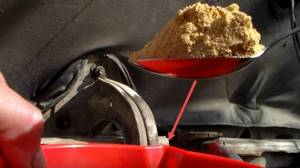
If mustard does not inspire confidence, you can buy a product special for this purpose at a car dealership.
They are called differently: powder reducer, radiator sealant, etc. But, as already mentioned, it is better to use other methods, because it is impossible to predict exactly how and where the powder will settle, and it can easily clog several tubes.
Temperature indicators of the mixture
Depending on the exact composition and specific manufacturer, the temperature range of welding applications can vary greatly. Most products can withstand freezing, for example, Mastix glue will not lose its properties even at -60 degrees. The overwhelming majority of cheap epoxies only work up to +150 degrees, so they can be used for welding radiators and heating pipes (heating networks usually operate at +95...+110 degrees).
Better quality products can withstand up to +260 degrees, but there are also high-temperature mixtures - they are used even in extreme conditions (up to +1300 degrees). Although there is no point in spending money on purchasing such products, you can buy a simple low-temperature composition.
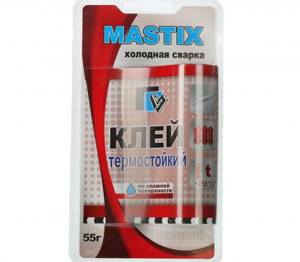
Repair by soldering
This method is considered the most reliable for self-repair. Depending on what material the radiator is made of, different technologies are used.
Soldering a car radiator
Copper and its alloys
To eliminate damage, you will need a regular soldering iron with a power of at least 100 W or a hatchet with a power of 300 W. An option heated by an open fire is also suitable, and if you have a compact gas burner, you can do without them. You also need to stock up on solder, flux or soldering acid.
Dirt from the damage is removed with a stiff brush and sanded with sandpaper until shiny. Degrease with acetone. After heating with a soldering iron and applying flux, pieces of solder are placed on it. They are heated until they spread over the surface.
A small hole in the radiator is covered with solder, and a large hole is closed with a patch. It is cut from the same material as the radiator. After sanding, one side is coated with solder. After applying the patch to the prepared area of damage, it is heated so that the layers of solder are soldered.
Repair of aluminum radiators
To solder this material, you will need a special flux, which is prepared from two parts of rosin and one part of iron filings. The prepared ingredients are heated to a liquid state, mixed, and cooled. To seal small cracks, ordinary solder will do, but to repair extensive damage to a car radiator, it is better to use a variety with the addition of bismuth. It is sold in radio stores under the name POSV-50 or 55 in the form of wire.
Advantages and disadvantages
The technology allows you to eliminate pipe leaks with high reliability. This procedure is safe to perform, which cannot be said about conventional welding. Other benefits are:
- convenience, ease of the technique even for beginners;
- excellent seam quality, which depends mainly on the type of material, and not on the speed of work;
- no need to purchase special tools, equipment, machinery and expensive materials;
- minimum energy consumption;
- fire, anti-explosion properties of epoxy;
- low cost of repairs;
- Availability of cold welding - adhesives are sold in any store.
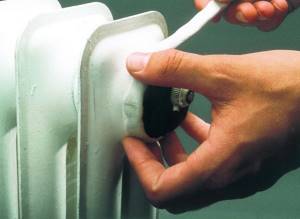
The technology also has disadvantages. Welding of this type is not designed for too high loads - pressure, high heat. Therefore, if there is a serious defect in a pipe or radiator, it is better to use hot welding or replace the area completely. It is important to follow the preparation measures - otherwise the quality of the weld will decrease. The durability of cold welding is lower than that of standard welding - repaired pipes will not last for many years, but will require new repairs. In fact, such repairs are considered by specialists to be a temporary measure.
Cleaning the radiator after repair
Since after repairing the radiator, a lot of debris and foreign chemical compounds remain in it, it should be cleaned before filling with freon. The easiest way to do this is with special cleaning foam, which can be purchased at any spare parts store.
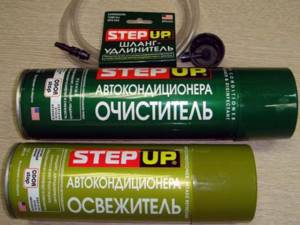
The foam canister always comes with a hose for the drainage pipe.
Read about refilling the air conditioner yourself: https://bumper.guru/klassicheskie-modeli-vaz/sistema-ohdazhdeniya/kak-chasto-nuzhno-zapravlyat-kondicioner-v-avtomobile.html
Here is the cleaning sequence:
- Under the dashboard of the car, you need to find the radiator drain pipe (usually a short flexible hose with a clamp).
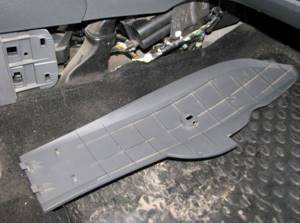
The air conditioner drain pipe is located next to the colored wire harness - The hose from the can of cleaning foam is connected to the drainage pipe and secured with a clamp.
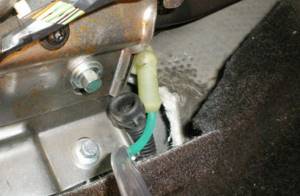
The foam canister is connected to the drainage pipe using an adapter - The car engine starts. The air conditioner also starts and is set to recirculation mode.
- The engine should idle for 20 minutes. During this time, the foam from the can will have time to pass through the entire radiator. After this, a suitable container is placed under the drainage pipe, the can of foam is disconnected and it comes out of the radiator.
Find out more about air conditioner diagnostics: https://bumper.guru/klassicheskie-modeli-vaz/sistema-ohdazhdeniya/kak-proverit-kondicioner-v-mashine.html
Types and manufacturers
Typically, cold welding is used when it is not financially feasible to use the hot method or it is difficult. Such situations occur when a minimal defect appears, damage to a dimensional product, or the risk of serious internal stresses in the pipe.
The following types of products can be used for repairs:
- universal – used for gluing metal, plastic, stone, wood, glass, concrete and most other materials;
- automotive - if the material indicates that it can withstand high temperatures, then it is allowed to be used in pipe repair;
- for plastic - usually the heat resistance of such products reaches +260 degrees and above, so they are also suitable for work.
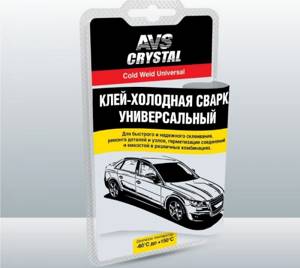
Products marked “for wood” or “for plumbing” are not suitable. They, as a rule, are not heat-resistant, and the quality of adhesion will be lower. It is better to find a specific welding method for working on metal or plastic with a clear indication of the temperature conditions. There are even super waterproof products for working underwater, which can also be used for cold welding.
Domestic formulations are cheaper than imported ones, but are not inferior in quality to the latter. Just don’t take the cheapest welding, it will certainly produce a low quality weld. The most popular means are:
- Hi-Gear. A universal adhesive, it is often purchased by car owners to seal elements subject to heavy loads. This glue will help eliminate any leaks in the heating system.
- "Titanium". Suitable for any materials, does not deteriorate from exposure to water and high temperatures.
ABRO, Polymet, Alma, Wurth Liquid, Permatex Cold Weld weldings are also in demand.
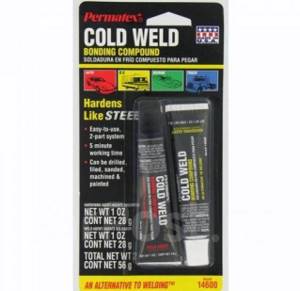
Recovery methods
The radiator in any car performs an important function - it cools the internal mechanisms of the car . The radiator grille removes excess heat from the engine, which contributes to stable operation of the latter. Coolant is poured inside the radiator, which bypasses all parts of the car through tubes and returns to the grille, where, blown by air, it cools again and goes further through the tubes.
The majority of cars are equipped with aluminum radiators. They do not rust, cool liquid quickly, and are durable. Plastic radiator grilles are also used because they have the same properties as aluminum: do not corrode, quickly cool liquid, and are durable. Due to the fact that the radiator is located in front, it can crack from any, even small impact.
Failure leads to leakage of coolant and overheating of the car. Therefore, it is necessary to seal it immediately. You can do this in the following ways:
- soldering;
- use of cold welding;
- using glue - sealant.
The main requirement for the method of gluing a plastic radiator is the ability to withstand different temperature conditions from high to low.
Read more about each method of sealing a crack on a radiator at home.
Instructions for cold pipe welding
First you need to properly prepare the base. To do this, all areas to which the resin will be applied are cleaned of rust, dirt, and old paint. You can sand them down to immediately remove all dirt. You should not try too hard, otherwise deep scratches will remain on the surface. But small abrasions will come in handy - they will enhance adhesion. Immediately before welding, parts must be degreased with a solvent (usually acetone) or washed with detergent. If possible, you need to dry the joints with a hair dryer - heating will improve adhesion.
The glue is prepared depending on the instructions. To produce a liquid adhesive composition, a strictly measured amount of hardener is added to the resin. The lifetime of the composition is also indicated in the instructions, then its polymerization begins. Usually the period is 10-15 minutes or a little more. This time can be slightly extended by cooling the product.
Plasticine-like mastics are prepared by kneading with your hands, after putting on gloves and wetting them with water. The required amount of material should be cut from the rod and the rest should be removed. You only need to cut strictly across, otherwise the ratio of epoxy and hardener will be incorrect. When ready, the color of the mass will become uniform, and it will heat up due to the release of heat.
Repairs are carried out as follows:
- apply glue to the future joint, directly into the hole, to ensure the mass penetrates deeper;
- the second option is to wind glass fiber or fiberglass, cover it with a liquid composition that has already begun to thicken a little;
- smooth the outside of the product with a small spatula or other flat device, slightly moistening it in water;
- within a few minutes you can change the position of the mixture;
- if the hole is too large, you will have to put a metal patch on it (directly using cold welding);
- fix the area for 15-60 minutes, depending on the instructions, using a clamp;
- If possible, the joint should not be subjected to intense loads for 1-24 hours, although 1-1.5 hours is sufficient for most welds.
If the repair is carried out in a room with a low temperature, the glue should be rolled into a ball and the mass inside should be allowed to warm up to +40...+50 degrees. The holding time of the ball should not be longer than the life time of the mixture (usually it is not kept for more than 4 minutes). To effectively heat the ball, it must be made with a mass of at least 50 g. It must be remembered that when repairing complex joints and assemblies, it is better to immediately use hot welding or replace parts; a cold joint may turn out to be unreliable.
Security measures
After drying, the material is safe for humans, but care must be taken when working with it. All work is carried out with gloves, avoiding direct contact of the epoxy with the skin. Do not use a food grade knife to cut resin. When contacting the mass, the skin is washed with soap and water.
How to solder an aluminum radiator
If anyone can handle a crack in plastic, soldering is more difficult. First of all, the problem is the availability of the necessary tools.
You need to know: How to remove air from a car's cooling system
For soldering you need a strong soldering iron that operates at temperatures of 250 degrees. Plus, you need a blowtorch to preheat the metal and a special flux for working with aluminum. Therefore, it is better to involve a specialist for such an operation.
Soldering
If such a soldering iron and lamp are at hand, all that remains is to get a flux that will prevent aluminum from interacting with oxygen. For these purposes, it is better to contact an amateur radio store. They have it already prepared, all you have to do is apply it.
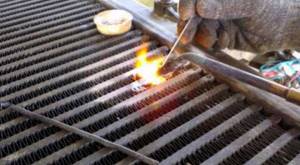
If you want to save money, you can make it yourself from rosin and metal filings (sharpen the unnecessary piece of iron with a file). Proportion 1:2.
You also need to additionally prepare solder from copper, zinc and silicon, pliers, fine-grained sandpaper, and acetone.
The radiator must be thoroughly washed and dried. Afterwards, the procedure is as follows:
- Clean the cracked area with sandpaper.
- Then degrease (without fanaticism).
- It is good to warm up the soldering area. At the same time, turn on the soldering iron so that it is immediately ready for use.
- Carefully and evenly apply flux to the crack.
- Warm it up a little more on top.
- Introduce solder into the flux zone and perform soldering in a circular motion, while it is better to move the soldering iron away from you.
As the craftsmen say, the use of the flux indicated above makes the soldering zone much harder than the aluminum itself.
Security measures
Do not forget that the materials used for soldering emit toxic compounds when heated, so repair work must be carried out under a hood or outside. Gloves are strictly required.
Experts do not recommend soldering the radiator at the connection point of the pipes, since due to the load during operation, such repairs will not be durable.
Summarizing the above, it turns out that you can fix a radiator leak yourself, using adhesives and cold welding for cracks in plastic elements and soldering in case of breakdown of aluminum parts.
Before starting repairs, you should estimate the material costs in case the purchase of all the necessary materials will amount to a significant cost of the new part.
Repairing cast iron and other types of radiators
Working with radiators is similar to sealing defects on pipes. The surface is cleaned and degreased. You can use alcohol for this purpose, applying it with a cotton swab. Next, take a ball of resin approximately 2 cm in diameter, knead it, mixing the components. Press the resin to the damaged area, smooth it out, and hold it with a rag or clamp.
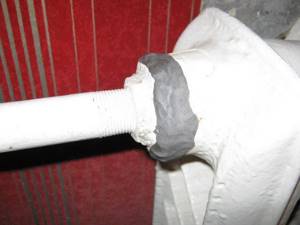
Usually 30-40 minutes are enough for polymerization, but it is better to use the battery after a day, not earlier. Naturally, the water supply must be turned off before repairs. If you need to remove a fistula, you need to take fiberglass and a liquid solution, wrap the area and seal it securely.
Cold welding is an excellent temporary measure until the end of the heating season. It will help eliminate pipe or radiator leaks quickly and without hassle!

